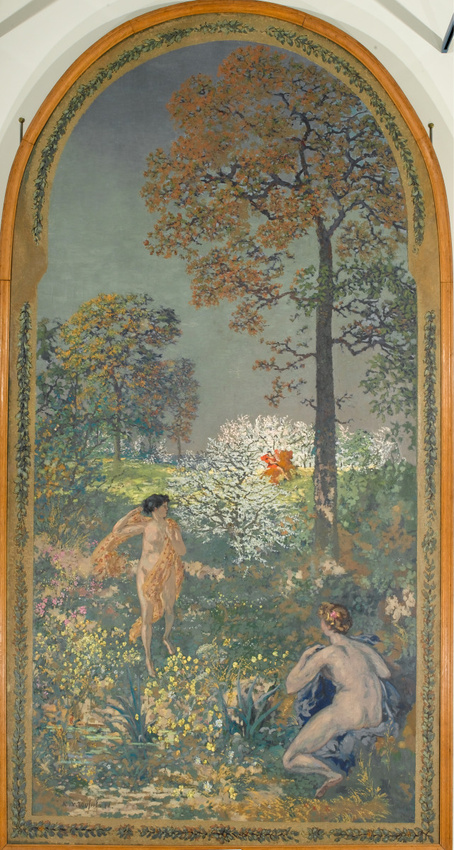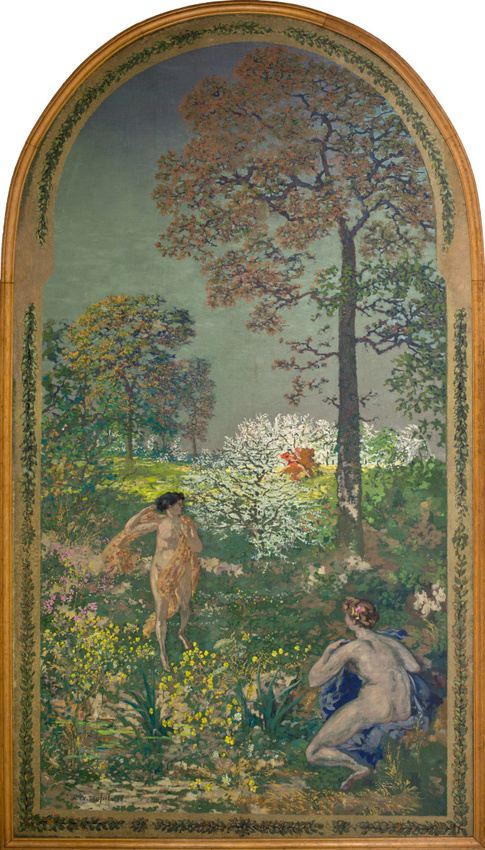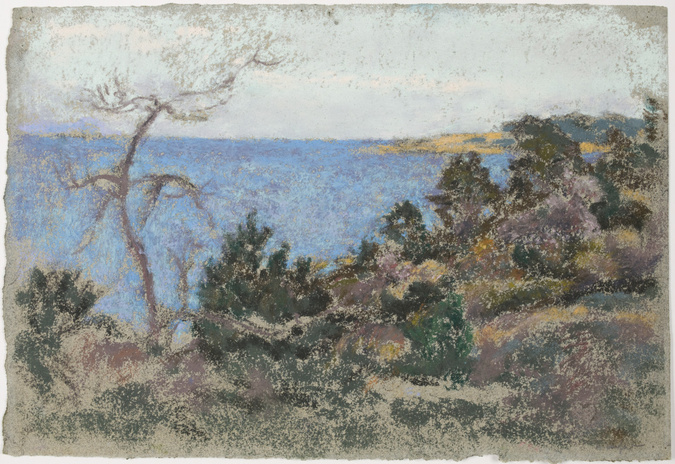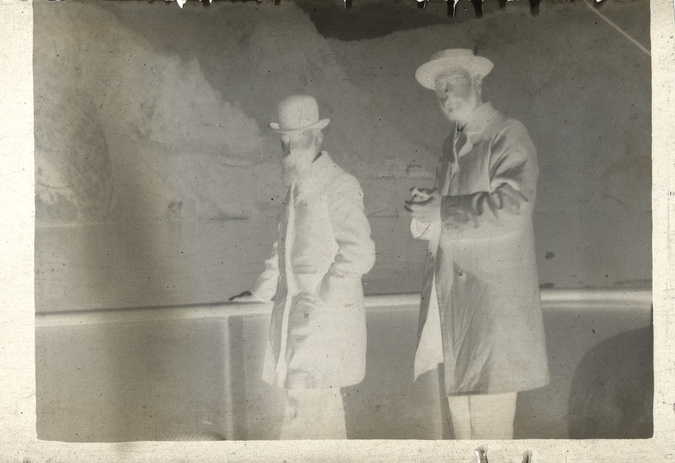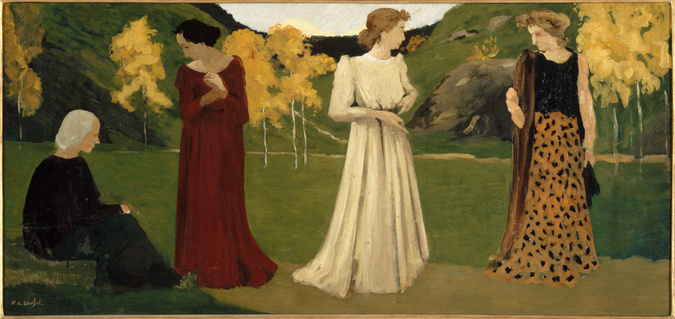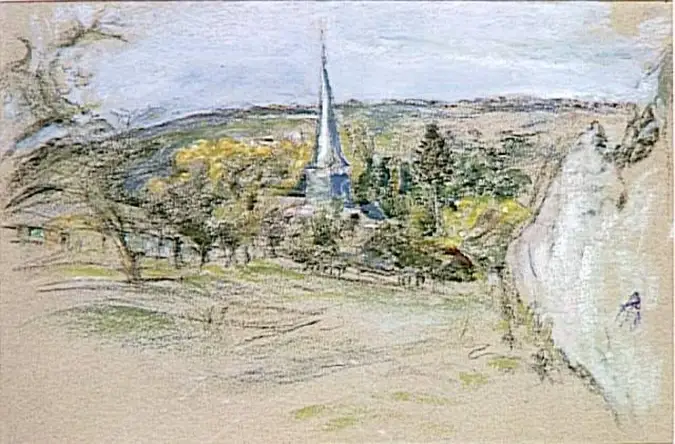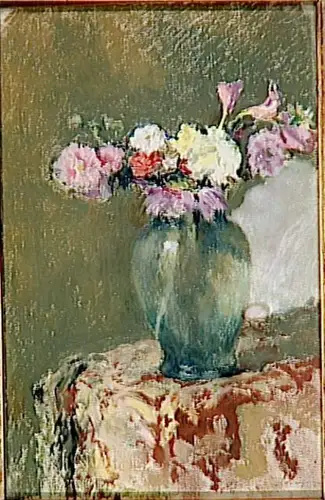L'Enlèvement des filles de Leucippe
This very large canvas was part of a decoration designed by Roussel for the Bernheim family mansion, avenue Henri Martin, in Paris.
For many years, the painter had specialised in bucolic themes starring nymphs and satyrs. He also favoured scenes from Greek and Roman mythology, peopled with gods and goddesses. This return to classical themes is a counterpoint to the avant-garde experiments of contemporary painting, challenged by the Fauves and the Cubists.
This panel illustrates the abduction of the daughters of Leucippus by Castor and Pollux. Rubens had painted the same episode in 1616; his painting is in the Pinacotheca, Munich. Unlike Ruben's work which shows the most violent moment of the abduction, Roussel dwells on the seconds before it happens. The two girls, catching sight of the horseman – a tiny red figure in the middle of the canvas – are trying to run away and hide their nakedness. The three characters form a winding baroque line which animates the landscape treated in a static, stereotyped manner.
Roussel's large composition demonstrates the maturity of his art. He has covered his canvas with small dynamic dots which revive this rather obscure episode. The balanced arrangement of the planes and the robust female bodies are admirable. Roussel painted a flowery frame around the canvas to complete his decoration.
